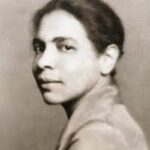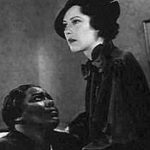Passing is the process of assuming an identity other than the one society has assigned and can apply to race, gender or sexuality. In the novel, Clare and Irene engage in passing by presenting themselves as white in order to gain privileges and advantages that would have been denied to them as African-Americans during that time. The motivation behind passing often stems from the desire to avoid racist discrimination and violence, making it an appealing option.
“Irene Redfield wished, for the first time in her life, that she had not been born a Negro. For the first time she suffered and rebelled because she was unable to disregard the burden of race.” (Larsen, page 181)
In my blog post, I would like to explore the various forms of passing depicted in the novel, extending beyond racial passing. Clare and Irene are not only passing as members of a different race but also as straight individuals. Throughout the narrative, Irene makes observations about Clare’s mannerisms, physical appearance, body language, speech, and actions, often expressing conflicting emotions. This complex mix of emotions that Irene experiences towards Clare can be confusing. At times, Irene seems unable to tolerate Clare, feeling annoyed or angry, while other moments reveal her concern and worry for her friend. Despite any negative feelings, it is evident that Irene invests a significant amount of time contemplating Clare and their relationship.
” …For I am lonely, so lonely…cannot help longing to be with you again, as I have never longed for anything before; and I have wanted many things in my life…” (Larsen, page 8)
“At that moment it seemed a dreadful thing to think of never seeing Clare Kendry again. Standing there under the appeal, the caress, of her eyes, Irene had the desire, the hope, that this parting wouldn’t be the last.” (Larsen, page 47)
The last type of passing is death. At the end of the story when Clare’s husband finds out the truth about her race. She is standing by an open window and the next second she falls out the window. Everyone in the room was distraught by the death. Irene is the only way that stays behind as everyone runs downstairs to see Clare, she wonders if she in fact did push Clare. No one thinks that it was Irene’s fault yet the feeling of guilt never goes away. The ending also seems to fulfill the premonitions that Irene has experienced since Clare first reappeared in her life. As the novel makes clear, Clare constantly took risks in the pursuit of her desires, it is even possible that she deliberately fell out of the window in the hope that her luck would hold a little longer and that she would escape the terrible situation in which she found herself.
Connecting Racial Passing to Today:
Passing can now be seen as controversial in the 21st century because it is seen as rejection of blackness and cultural roots. Racial passing may not be as prevalent as in the past but it continues to be a relevant and thought-provoking topic. It opens discussions about identity, privilege, authenticity, colorism and societal perceptions.
-Colorism: Passing often involves presenting oneself as having lighter skin or conforming to Eurocentric beauty standards. This highlights the ongoing impact of colorism in society and the privileges associated with lighter skin tones.
-Racial Identity and Passing: Irene’s character embodies the struggles and complexities faced by many biracial individuals during the time. By choosing to embrace her Black identity, she highlights the importance of racial pride and community solidarity. Irene is suspicious of Clare’s decision to “pass” as White, as it challenges its authenticity and raises questions about the motivations and consequences of such actions.
The video I have attached is an example of what people go through to this day who pass for an identity that is not theirs:





